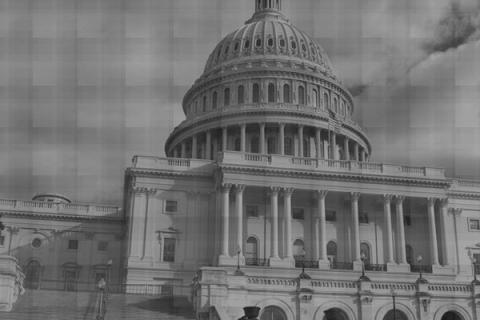Despite the momentous 60% approval rating President Obama received after the Navy SEAL operation that killed Osama bin Laden, the AP poll sampling public opinion appears to have largely overlooked Independent voters.
In a post for the National Review in which author Jim Geraghty brings to light the fact that the AP's sample was skewed towards Democrats by 17 percentage points, he provides a comprehensive breakdown of the poll's overall partisan representation. Strikingly, a mere 4% of those surveyed identified themselves as purely Independents who claimed that they associate with neither Democrats nor Republicans. Among those who identified with either of the two major parties, 46% called themselves Democrats or as leaning in that direction, while 29% called themselves Republican or as leaning in that direction.
In his analysis, Geraghty raised some thought-provoking points that could also apply to Independents looking to determine where they fit in the whole situation. For instance, party ID can shift dramatically from poll to poll, making voter identification a frequently flexible and fickle label. In the case of killing Osama bin Laden, for instance, more Americans might identify themselves as Democrats in the spirit of the moment. Geraghty rightfully noted, however, that this fickleness is better confirmed through actually examining voter behavior (i.e. party registration patterns).
Also at issue is the way that the AP phrases poll questions and constructs polling methods, prompting different responses. This is essentially why polls from Gallup, Reuters, Rasmussen, etc., all appear to have different results in measuring current sentiment. The AP acknowledged these factors as causal factors for the distinctly favorable results for President Obama.
Even though he analyzed the poll for his conservative audience, Geraghty's skepticism is something I also share, especially with the small sampling of Independents. As I've noted before, the Independent demographic is rapidly growing, which in turn has significant implications in the political arena. In this particular case, it would have likely altered the poll results.
Trumpeting President Obama's apparent high ratings with Independents in its own reporting on its own poll, the AP called the President's post bin Laden boost "worrisome" for Republicans. In light of the Pew Research Center's recent published findings on the complexity of Independent voters, the AP's classification would seem to be a drastic oversimplification of this crucial demographic.
In the end, these findings should remind us of the fallible nature of current poll methodology. In light of the rapidly changing Independent voter demographic, it would behoove pollsters to devote more time to better classifying, defining, and representing a bloc of voters that continues to grow more disillusioned with both Democrats and Republicans.

